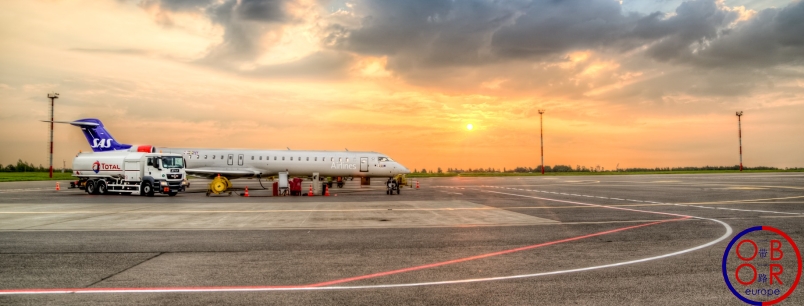
The Belt and Road Initiative is not only about railroads and sea routes. The airline industry and aviation sector are also some major components of the BRI. For example, several airport infrastructure projects are financed under the BRI, such as the future airport of Gwadar in Pakistan.
Aviation is also an important sector of cooperation between China and the European Union, to strengthen and accelerate their exchanges.
Some major agreements
In late May 2019, the European Commission and Beijing signed two important agreements to develop aviation between Europe and China.
The first one is a bilateral civil aviation safety agreement (BASA). This agreement will allow mutual recognition of civil aviation safety evaluations and certifications. This decision will help reduce some costs for European and Chinese aeronautical companies. This agreement demonstrates mutual trust in the safety and certification procedures of both countries.
The second one is a “horizontal” aviation agreement. It allows any airline from the European Union to fly to China from any EU member state. For example, Air France could operate flights to China from some Italian or German airports.
New destinations
Thanks to growing tourism between the two regions, and intensifying trade, air traffic between China and the European Union is increasing. In 10 years (from 2008 to 2017), air traffic between China and the European Union has doubled, reaching more than 10 million passengers per year.
This trend must be confirmed in the coming years.
China is modernizing and building new airports. Beijing’s new airport, “Beijing Daxing International Airport”, is expected to welcome its first passengers in September 2019, and more than two hundred other airports are expected to be built by 2035. Several secondary cities are now connected by direct flights to the European Union. Thus, in July 2018, the French company XL Airways inaugurated its first flight between Paris and Jinan in Shandong.
On the European side, eighteen EU member states’ capitals are connected by direct flights to China. Chinese airlines are increasingly interested in European regional hubs. In France, Nice will become this summer the second city after Paris to be served by Air China.
Aircraft construction industry
China and the European Union are also privileged partners in the aircraft industry. For Airbus, China is a major market, almost a quarter of all Airbus aircrafts operate in China. According to a study published by Airbus, the Chinese domestic airline market is expected to triple between 2017 and 2037. Moreover, the “Belt and Road initiative” is expected to accelerate the development of air traffic between China and countries along the new Silk Roads.
In March 2019, Airbus and China Aviation Supplies Holding Company signed an agreement for the sale of 300 aircrafts (290 A320 aircrafts and 10 A350 XWB aircrafts) to Chinese companies.
China also hosts some Airbus production and research centers. Since 2008, some Airbus A320 aircrafts have been assembled in Tianjin. In April 2019, the first Airbus H135 helicopter assembly line was inaugurated in Qingdao. Finally, one of Airbus’ main research centers is located in Shenzhen.
As for COMAC, China’s main aircraft manufacturer, it opened its European headquarters in Paris in 2011, and collaborates with European companies such as German Liebherr for some elements of its C919 airliner.
These multiple collaborations reflects the importance of the Sino-European partnership in aviation and airline industry that the BRI development will surely deepen.
